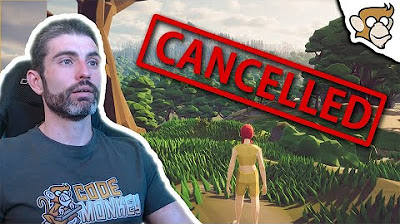Game Developer Reveals How Much A Popular Steam Game Makes
Summary
TLDRA game developer shares the harsh financial realities of indie game development in this eye-opening video. Despite 750,000 downloads of their free-to-play FPS, *Paint Warfare*, the game only earned $2,600 over four years after expenses, cuts, and taxes. The video reveals how challenging it is to monetize free-to-play games and the low returns even with a large number of downloads. The developer discusses the difficulties of turning passion into a sustainable career and emphasizes the importance of building a community and gaining experience, despite financial setbacks.
Takeaways
- 😀 The reality of game development can be drastically different from public perceptions, especially in terms of financial success.
- 😀 Game developers often face criticism from outsiders who assume high profits without understanding the complexities of game development economics.
- 😀 Even a game with 750,000 downloads and microtransactions may not generate significant revenue, as demonstrated by the example of 'Paint Warfare'.
- 😀 'Paint Warfare', a free-to-play FPS, made only $2,680 over four years, revealing how low actual earnings can be despite high download numbers.
- 😀 A game developer's gross income from a successful indie game can be far less than expected, particularly after platform cuts (e.g., Steam's 30%) and expenses.
- 😀 The financials of game development are often overshadowed by the number of downloads, leading to misconceptions about profitability.
- 😀 Free-to-play games are challenging to monetize effectively, and the model often requires significant user engagement and microtransaction purchases to succeed.
- 😀 Despite low financial returns, developers often gain valuable experience, skill development, and networking opportunities that can benefit their future projects.
- 😀 The decision to make a game free-to-play or pay-to-play can greatly affect its financial success. In some cases, charging a price upfront might have been more profitable.
- 😀 The indie game development community faces significant challenges, and despite widespread download success, it doesn't always translate to financial sustainability.
- 😀 'Paint Warfare' highlighted how even with positive reviews and a sizable download count, it's difficult for indie developers to achieve significant financial success without proper monetization strategies.
Q & A
What was the total revenue earned by Banana Dev from the game *Paint Warfare* over four years?
-Over four years, *Paint Warfare* earned a total of $4,672 USD gross. After taxes and Steam's 30% cut, the final take-home amount was about $2,668 USD.
How many hours did Banana Dev spend developing *Paint Warfare*?
-Banana Dev spent around 3,512 hours developing *Paint Warfare* with Steam tracking this time, not including additional hours spent in Unity before releasing the game on Steam.
How does the hourly rate of Banana Dev compare to minimum wage?
-Banana Dev’s hourly rate for developing *Paint Warfare* works out to 42 cents per hour, which is far below minimum wage. For comparison, if working at McDonald's in Australia, Banana Dev could earn about $24.10 AUD or $16 USD per hour.
Why did *Paint Warfare* transition to a free-to-play model, and did it improve revenue?
-*Paint Warfare* started as a paid game but transitioned to a free-to-play model with microtransactions to boost revenue. While it did make more money from DLC sales, the developer questions whether the free-to-play model actually made more money in the long term compared to keeping a price tag on the game.
What misconception about game development and monetization is addressed in the video?
-The video addresses the misconception that a high number of downloads automatically translates into significant revenue. Despite having 750,000 downloads, *Paint Warfare* only earned around $2,668 after four years due to the limitations of microtransactions and the challenges of monetizing free-to-play games.
How did *Paint Warfare*'s microtransaction model work?
-*Paint Warfare* had microtransactions where players could buy DLC bundles ranging from $2 to $5 USD for cosmetic items like hats and skins for the guns in-game. Despite these purchases, the revenue was still very low.
What is Banana Dev’s advice to aspiring game developers regarding the free-to-play model?
-Banana Dev advises against jumping into the free-to-play model without fully understanding the difficulties of monetizing it. The model is hard to implement successfully and doesn’t guarantee financial success, especially for indie developers.
How did *Paint Warfare*'s paid-to-play period compare financially to the free-to-play period?
-During its paid-to-play period, *Paint Warfare* earned around $594 USD. After transitioning to free-to-play, the game made more money from DLC sales but still only earned about $1,166 USD annually after Steam’s fees and taxes.
What lessons did Banana Dev learn from working on *Paint Warfare* despite the low revenue?
-Banana Dev learned a lot about game development, including what to do and what not to do when publishing games. The experience provided valuable skills, and Banana Dev gained a significant amount of knowledge and opportunities for future projects.
How does the video highlight the disparity between download numbers and financial success in indie game development?
-The video highlights that a high number of downloads, like the 750,000 for *Paint Warfare*, does not guarantee financial success. Despite the large number of downloads, the revenue was far below expectations, showing the complexity of monetizing games and the risks indie developers face.
Outlines

Dieser Bereich ist nur für Premium-Benutzer verfügbar. Bitte führen Sie ein Upgrade durch, um auf diesen Abschnitt zuzugreifen.
Upgrade durchführenMindmap

Dieser Bereich ist nur für Premium-Benutzer verfügbar. Bitte führen Sie ein Upgrade durch, um auf diesen Abschnitt zuzugreifen.
Upgrade durchführenKeywords

Dieser Bereich ist nur für Premium-Benutzer verfügbar. Bitte führen Sie ein Upgrade durch, um auf diesen Abschnitt zuzugreifen.
Upgrade durchführenHighlights

Dieser Bereich ist nur für Premium-Benutzer verfügbar. Bitte führen Sie ein Upgrade durch, um auf diesen Abschnitt zuzugreifen.
Upgrade durchführenTranscripts

Dieser Bereich ist nur für Premium-Benutzer verfügbar. Bitte führen Sie ein Upgrade durch, um auf diesen Abschnitt zuzugreifen.
Upgrade durchführenWeitere ähnliche Videos ansehen
5.0 / 5 (0 votes)






